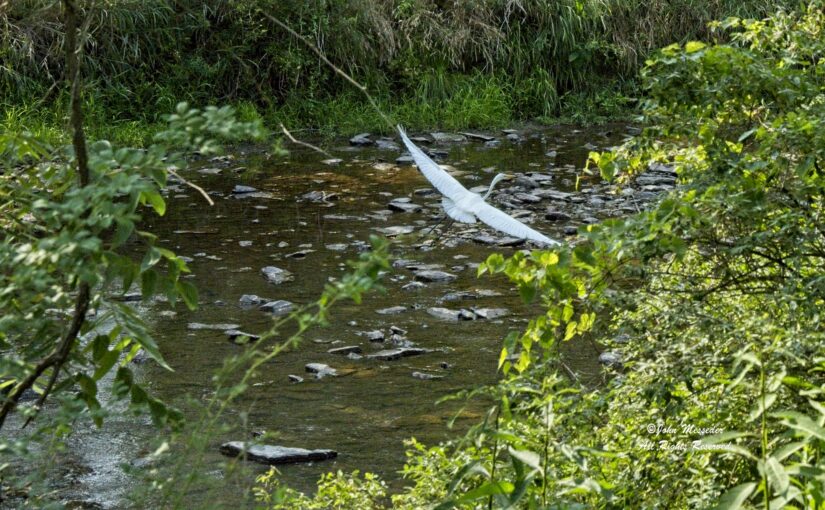When I was a kid, I practically lived summers in a 500-acre lake, a nearby river and a few streams. My favorite activity after hours of hot labor was to peel down and join the loons and beavers watching fish. (The loons would eat some of them, but many years would pass before I got a taste for raw piscatorial cuisine. I still like it better cooked.)
Daytimes, besides diving to watch the underwater shenanigans, I often swam the half-mile across the lake. My favorite part of the trip was crossing a cold upwelling, a watery shaft of spring water coming up from the lake bottom. I never thought much about where the stream originated, but that upward column of chilly H2O never ceased.
As winter closed in, that spot on the lake surface was the last to freeze over, kept open by the steady churning of water like the way some people leave their faucet running to keep their pipes from freezing on the otherwise calm pond surface occasionally capturing a young loon who had dallied while the old folks shoved off for unfrozen winter water.
I have been told of loons on Long Pine Reservoir, but I have never seen or heard them. It is about the only body of water large enough to attract them within reasonable distance of my home.
But for the past two decades I have called South Central Pennsylvania home, I have enjoyed the longer summers and plentiful recreational water. Then …
Last month, the Watershed Alliance of Adams County embarked on a quest to sample the county’s creeks for pathogens, concentrating on a group of potential illness-creators called Escherichia coli. We usually hear it referred to simply as E. coli.
Weekly samples revealed the presence of E. coli that, in several locations, exceeded the EPA and state DEP standards for safe recreation. The standards rate as unsuitable for recreational purposes an E. coli level of 126 units per 100 milliliters of water. At that level, the EPA says, about 36 people of every 1,000 are likely to experience at least minor stomach upset, diarrhea and related discomfort.
The results of the August testing reportedly did not reveal the type of E. coli, only that there was some.
Small quantities live in the gut of warm-blooded critters such as cows – and us. Mayo Clinic notes, “Most types of E. coli are harmless or cause relatively brief diarrhea. But a few strains, such as E. coli O157:H7, can cause severe stomach cramps, bloody diarrhea and vomiting.”
Perhaps that is part of why so many people play in the waters near my home and do not seem to fill the hospital with ill or, in severe cases, dying family – at least, not from playing in the water. Either the E. coli we are seeing is not the dangerous variety, or our people are not becoming ill enough long enough to be concerned.
We are faced in our daily comings and goings with a host of risks. Some we accept – such as driving a car among sometimes confused drivers attempting to navigate the roundabout that is Gettysburg Square. Some we treat with more circumspect consideration – such as attempting to pick up a rattlesnake crossing one of our mountain roads.
The question that begs an answer is thus: Is our water sufficiently “impaired” to be hazardous to the health of humans and other earthly critters, or are we inadvertently supporting the profits of plastic bottle makers and companies that fill the bottles with gasoline-priced water?
Regular sampling and testing is a great step toward determining the answer. It’s good to know WAAC plans to expand its pathogen testing program. Meanwhile, the quest for more definitive EPA and DEP standards continues.
